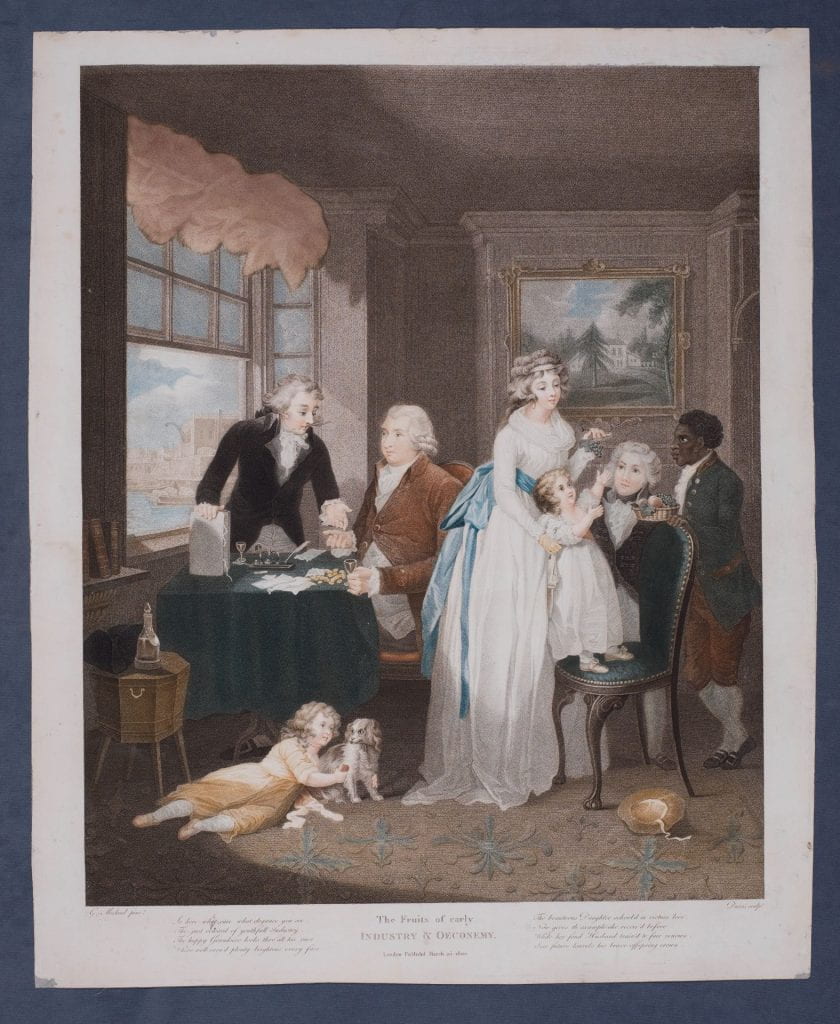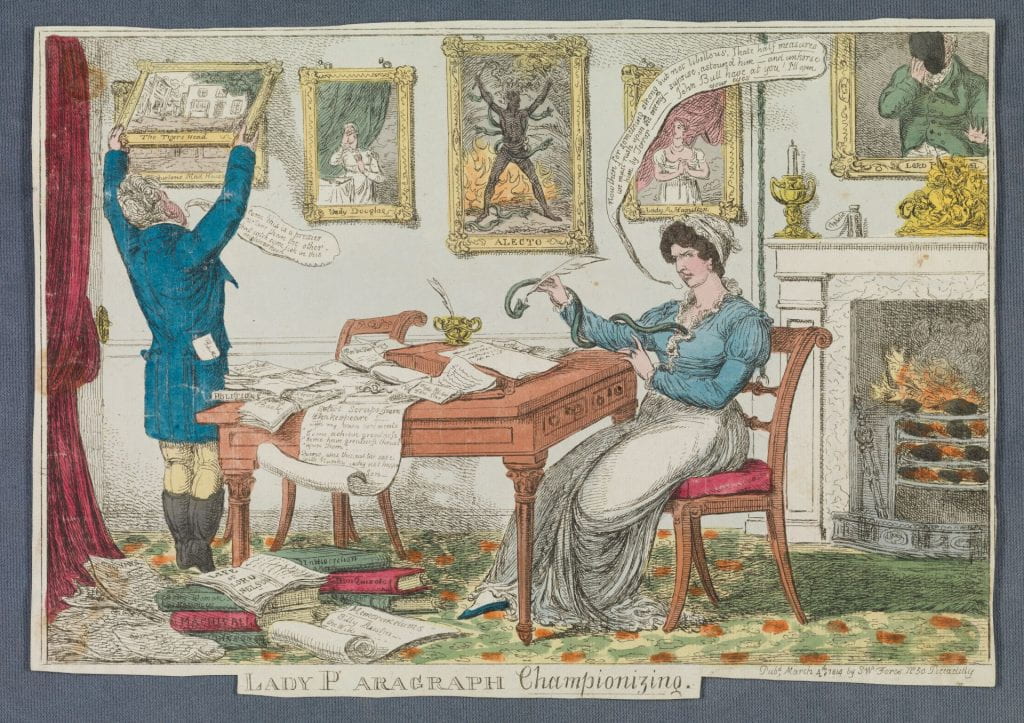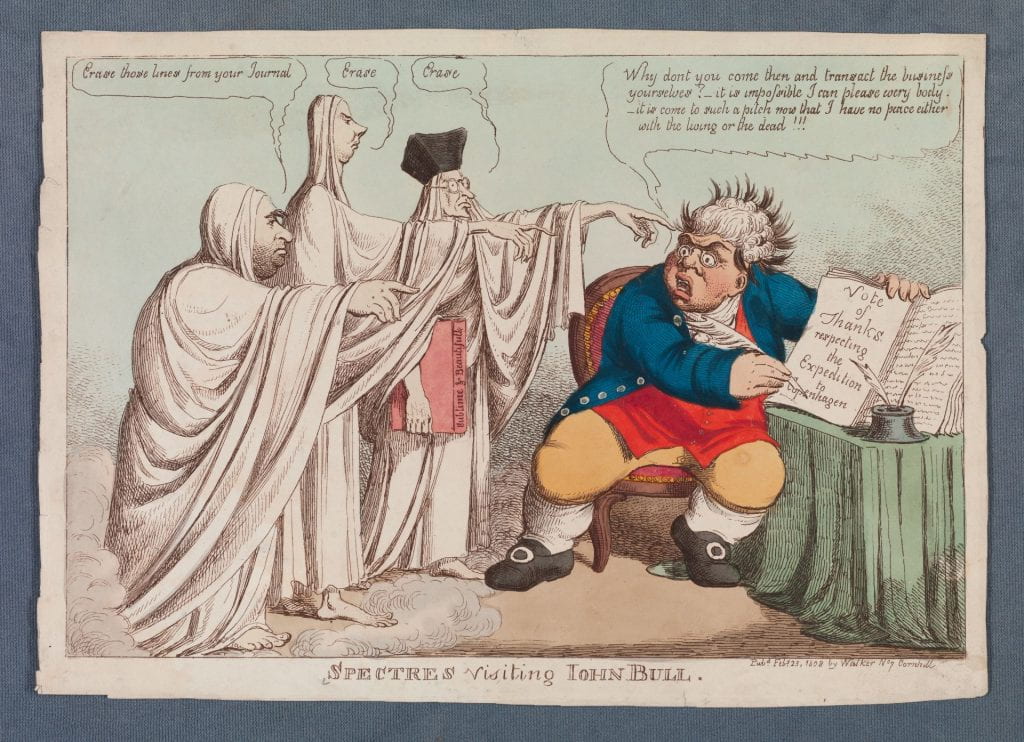
“Twelve figures arranged in two rows, each representing Dundas (not caricatured) in one of his capacities, title and words etched above each. [1] ‘A Governor of the Charter House’. He walks (left to right), looking down at a document in his left hand and saying: “How I venerate Charters”. [2] ‘Joint Keeper of the Signet in Scotland’. He holds out his left hand looking admiringly at a signet ring: “a vera pretty Seal ring worth £2000 a Year”. [3] ‘Chancellor of the University of St Andrew’. He sits directed to the left in a high-backed arm-chair wearing academic cap and long gown: “There is great weight and Dignity in a gown and Square Cap.” [4] ‘Patent Printer of the Bible in Scotland’. He sits in dressing-gown, cap, and slippers at a printing-press of the Caxton type, saying: “This printing and composing is vera tedious, but as it brings in about £6000 per Annum I must noe loose sight of it.” [5] ‘Custos Rotulorum for Middlesex’. He sits pompously in a high-backed chair wearing an old-fashioned cocked hat and laced coat, saying: “A little Consequence is very necessary in a custos Rotulorum”. [6] ‘A Treasurer of the Navy’. He sits at a table on which are money-bags and piles of coin, which he is counting: “Ah! this is pretty neat employment I love to count over the Siller.” [7] ‘A Governor of Greenwich Hospital’. He stands, wearing cocked hat and uniform, in profile to the right, right hand on his hip, left hand on the hilt of a sword: “a naval uniform is vera becoming.” [8] ‘A Commissioner of Chelsea Hospital’. He stands with arms folded, wearing cocked hat with military uniform: “As is also that of the Miliatory in due season.” [9] ‘A Commissioner for India Affairs’. He stands with his back to a group of barrels and chests, turning to the right: “What are ye aboot ye lazy loons, why are not these goods shipp’d off for India d’ye mean to do nothing at aw’ for your money.” [10] ‘Governor of the Bank of Scotland’. He stands in profile to the left, ‘chapeau-bras’, one hand thrust under his waistcoat and wearing an old-fashioned wig: “This is what I call snug – vera little trouble.” [11] ‘A Secretary’. He writes busily in profile to the right at a davenport desk: “By my Sawl I care not how many Trades they make me sae that the Siller comes alang with them catch aw things is the rule in Scotland.” [12] ‘An Elder Brother of the Trinity House’. He stands in profile to the left, wearing a gown, bowing, cap in hand: “This concludes for the present my small portion of the Candle ends, and cheese parings” [cf. British Museum Satires No. 9038].”–British Museum online catalogue.
- Printmaker: Cruikshank, Isaac, 1764-1811, printmaker.
- Title: A specimen of Scotch modesty [graphic] / I.C.
- Publication: [London] : Published Feby. 5, 1798, by S.W. Fores, No. 50 Piccadilly corner of Sackville Street, [5 February 1798]
798.02.05.01++
Acquired September 2023




